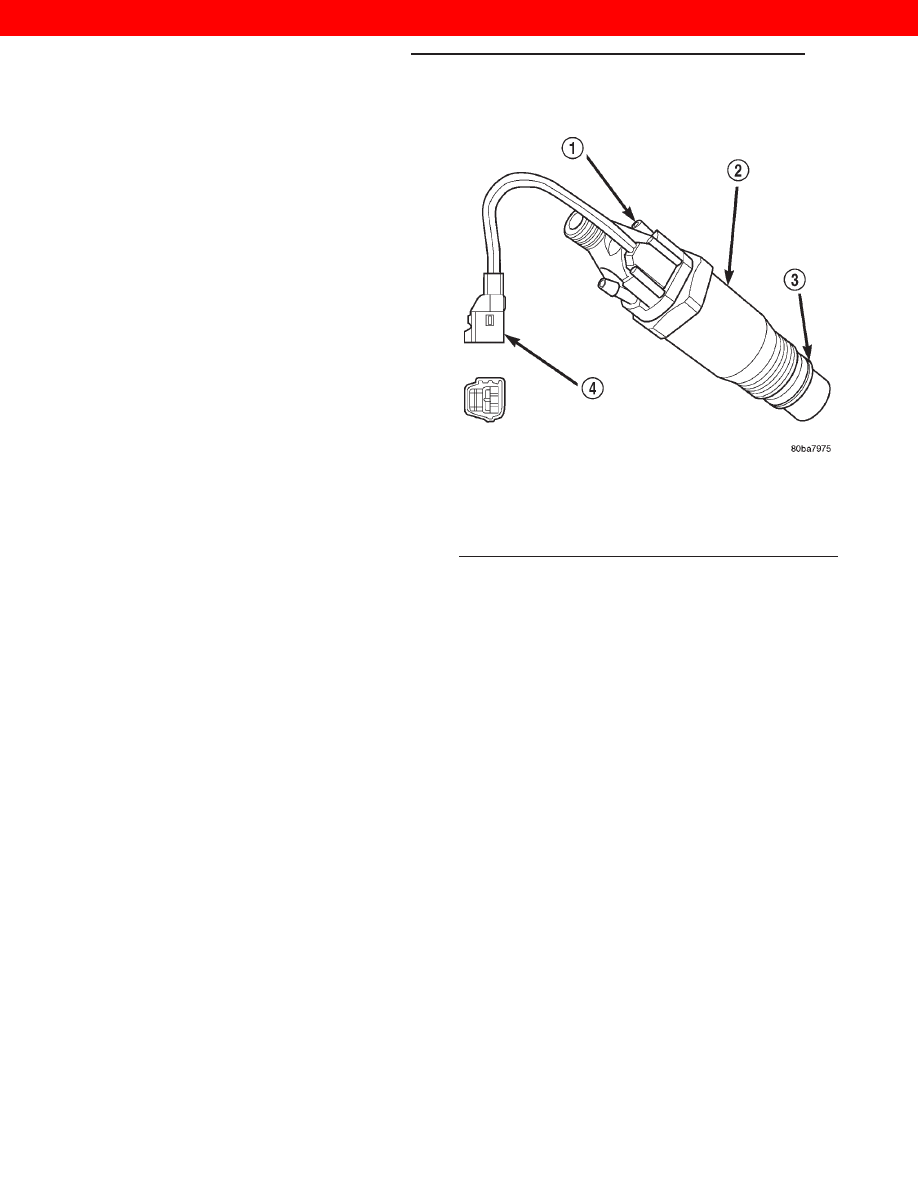Jeep XJ. Manual - part 354

The battery input also provides the voltage that is
needed to keep the PCM memory alive. The memory
stores Diagnostic Trouble Code (DTC) messages.
Trouble codes will still be stored even if the battary
voltage is lost.
SENSOR RETURN—ECM/PCM INPUT (ANALOG
GROUND)
DESCRIPTION
Sensor Return provides a low noise Analog ground
reference for all system sensors.
IGNITION CIRCUIT SENSE—ECM/PCM INPUT
DESCRIPTION
The ignition circuit sense input signals the ECM
and PCM that the ignition (key) switch has been
turned to the ON position. This signal initiates the
glow plug control routine to begin the “pre–heat”
cycle.
IGNITION CIRCUIT SENSE—PCM INPUT
The ignition circuit sense input signals the PCM
that the ignition (key) switch has been turned to the
ON position. This signal initiates the glow plug con-
trol routine to begin the “pre–heat” cycle.
POWER GROUND
DESCRIPTION
Provides a common ground for power devices (sole-
noid and relay devices).
NEEDLE MOVEMENT OR INTRUMENTED FIRST
INJECTOR—ECM INPUT
DESCRIPTION
This input from the ECM supplies a constant 30
mA electrical current source for the first injector sen-
sor. It will vary the voltage to this sensor when it
senses a mechanical movement within the injector
needle (pintle) of the number–1 cylinder fuel injector.
When this voltage has been determined by the ECM,
it will then control an output to the fuel timing sole-
noid (the fuel timing solenoid is located on the fuel
injection pump). Also refer to Fuel Injection Pump for
additional information.
The first injector sensor is a magnetic (inductive)
type.
The first injector sensor is used only on the fuel
injector for the number–1 cylinder (Fig. 4). It is not
used on the injectors for cylinders number 2, 3, or 4.
FUEL INJECTOR SENSOR—GROUND
DESCRIPTION
Provides a low noise ground for the fuel injector
sensor only.
ENGINE COOLANT TEMPERATURE SENSOR—
ECM/PCM INPUT
DESCRIPTION
The 0–5 volt input from this sensor tells the ECM
and PCM the temperature of the engine coolant.
Based on the voltage received at the ECM, it will
then determine operation of the fuel timing solenoid,
glow plug relay, electrical vacuum modulator (emis-
sion component) and generator (charging system).
The sensor is located on the side of the #3 cylinder
head near the rear of fuel injection pump (Fig. 5).
ENGINE SPEED SENSOR—ECM INPUT
DESCRIPTION
The engine speed sensor is mounted to the trans-
mission bellhousing at the left/rear side of the engine
block (Fig. 6).
The engine speed sensor produces its own output
signal. If this signal is not received, the ECM will not
allow the engine to start.
The engine speed sensor input is used in conjunc-
tion with the first injector sensor to establish fuel
injection pump timing.
Fig. 4 Fuel Injector Sensor
1 – NEEDLE MOVEMENT SENSOR
2 – FUEL INJECTOR (NUMBER 1 CYLINDER ONLY)
3 – COPPER WASHER
4 – SENSOR CONNECTOR
14 - 26
FUEL SYSTEM—2.5L DIESEL ENGINE
XJ
DESCRIPTION AND OPERATION (Continued)
2000 JEEP CHEROKEE